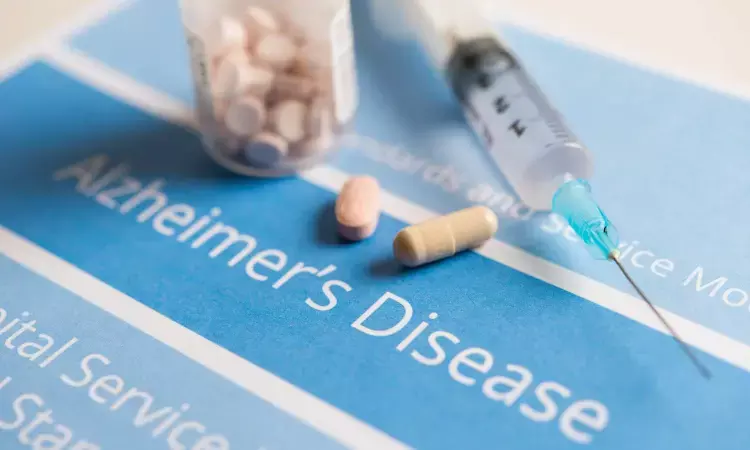- Home
- Medical news & Guidelines
- Anesthesiology
- Cardiology and CTVS
- Critical Care
- Dentistry
- Dermatology
- Diabetes and Endocrinology
- ENT
- Gastroenterology
- Medicine
- Nephrology
- Neurology
- Obstretics-Gynaecology
- Oncology
- Ophthalmology
- Orthopaedics
- Pediatrics-Neonatology
- Psychiatry
- Pulmonology
- Radiology
- Surgery
- Urology
- Laboratory Medicine
- Diet
- Nursing
- Paramedical
- Physiotherapy
- Health news
- Fact Check
- Bone Health Fact Check
- Brain Health Fact Check
- Cancer Related Fact Check
- Child Care Fact Check
- Dental and oral health fact check
- Diabetes and metabolic health fact check
- Diet and Nutrition Fact Check
- Eye and ENT Care Fact Check
- Fitness fact check
- Gut health fact check
- Heart health fact check
- Kidney health fact check
- Medical education fact check
- Men's health fact check
- Respiratory fact check
- Skin and hair care fact check
- Vaccine and Immunization fact check
- Women's health fact check
- AYUSH
- State News
- Andaman and Nicobar Islands
- Andhra Pradesh
- Arunachal Pradesh
- Assam
- Bihar
- Chandigarh
- Chattisgarh
- Dadra and Nagar Haveli
- Daman and Diu
- Delhi
- Goa
- Gujarat
- Haryana
- Himachal Pradesh
- Jammu & Kashmir
- Jharkhand
- Karnataka
- Kerala
- Ladakh
- Lakshadweep
- Madhya Pradesh
- Maharashtra
- Manipur
- Meghalaya
- Mizoram
- Nagaland
- Odisha
- Puducherry
- Punjab
- Rajasthan
- Sikkim
- Tamil Nadu
- Telangana
- Tripura
- Uttar Pradesh
- Uttrakhand
- West Bengal
- Medical Education
- Industry
Excessive light pollution may increase risk of Alzheimer's, especially in younger people: Study

In some places around the globe, the lights never go off. Streetlights, roadway lighting, and illuminated signs can deter crime, make roads safer, and enhance landscaping. Undisrupted light, however, comes with ecological, behavioral, and health consequences.
In the US, some states have legislation in place to reduce light pollution; however, levels of light at night remain high in many parts of the country. Now, researchers there have investigated correlations between outside nightly light pollution and Alzheimer's disease (AD).
“We show that in the US there is a positive association between AD prevalence and exposure to light at night, particularly in those under the age of 65,” said first author of the Frontiers in Neuroscience study, Dr Robin Voigt-Zuwala, an associate professor at Rush University Medical Center. “Nightly light pollution – a modifiable environmental factor-may be an important risk factor for AD.”
High intensity, high risk
The researchers studied light pollution maps of the lower 48 US states and incorporated medical data about variables known or believed to be risk factors for AD in their analysis. They generated nighttime intensity data for every state and divided them into five groups, from lowest to highest nighttime light intensity.
Their results showed that for people aged 65 and older, AD prevalence was more strongly correlated with nightly light pollution than some other disease factors, including alcohol abuse, chronic kidney disease, depression, and obesity. Other risk factors, like diabetes, high blood pressure, and stroke were more strongly associated with AD than light pollution.
For people aged under 65, however, the researchers found that higher nighttime light intensity was associated with a greater AD prevalence than any other risk factor examined in the study. This could suggest that younger people may be particularly sensitive to the effects of light exposure at night, the researchers said.
It is unclear why younger people could be more vulnerable, but it could be due to individual differences in light sensitivity. “Certain genotypes, which influence early-onset AD, impact the response to biological stressors which could account for increased vulnerability to the effects of nighttime light exposure,” Voigt-Zuwala explained. “Additionally, younger people are more likely to live in urban areas and have lifestyles that may increase exposure to light at night.”
Curtains and masks
The researchers hope that their findings can help educate people about the potential risks of light at night. “Awareness of the association should empower people – particularly those with risk factors for AD – to make easy lifestyle changes,” said Voigt-Zuwala. “Easy to implement changes include using blackout curtains or sleeping with eye masks. This is useful especially for those living in areas with high light pollution.”
Furthermore, light exposure inside the home could be as important as light exposure from the outside. While the researchers did not examine the effects of inside light in the present study, the said that blue light has the greatest impact on sleep, and using blue light filters, swapping to warm light, and installing dimmers in the home could effectively reduce light exposure.
The researchers pointed out that their results are based on a subset of the US population, and that people may not be living in areas with high light pollution all their lives – both could impact individual outcomes. They also said that further research is needed to better understand how light at night influences AD.
Reference:
Robin M. Voigt, Bichun Ouyang, Ali Keshavarzian, Outdoor nighttime light exposure (light pollution) is associated with Alzheimer’s disease, Frontiers in Neuroscience, https://doi.org/10.3389/fnins.2024.1378498.
Dr Kamal Kant Kohli-MBBS, DTCD- a chest specialist with more than 30 years of practice and a flair for writing clinical articles, Dr Kamal Kant Kohli joined Medical Dialogues as a Chief Editor of Medical News. Besides writing articles, as an editor, he proofreads and verifies all the medical content published on Medical Dialogues including those coming from journals, studies,medical conferences,guidelines etc. Email: drkohli@medicaldialogues.in. Contact no. 011-43720751


